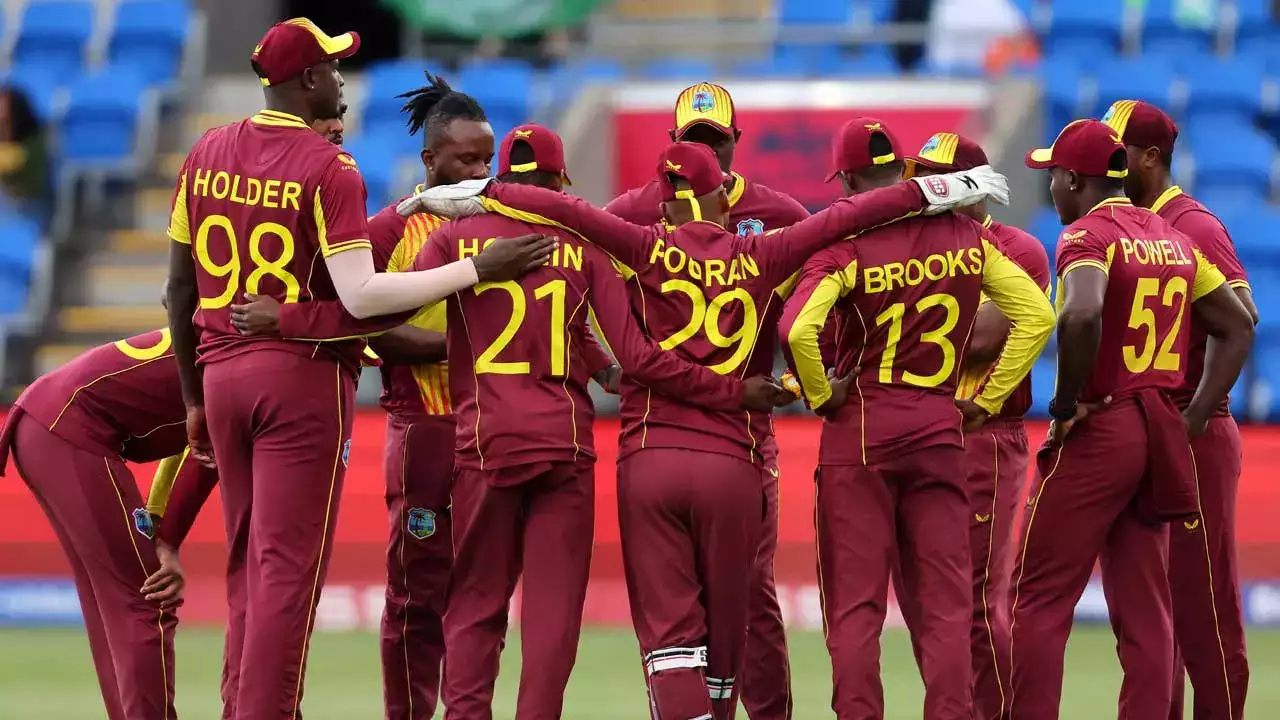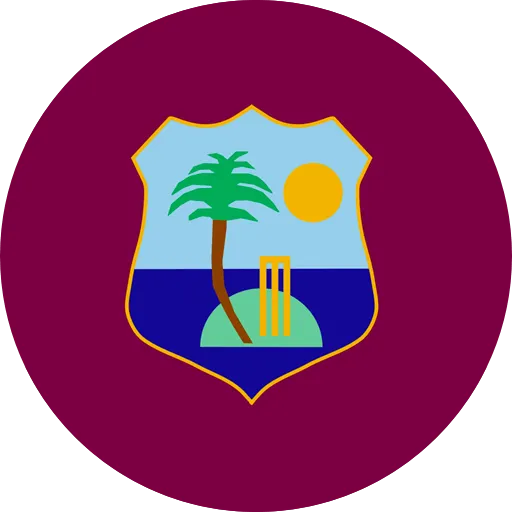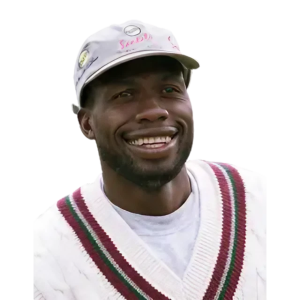
The West Indies cricket team, representing a group of Caribbean countries, has a storied history in the sport.
Key Points for West Indies Cricket Team
Show
- Regional Representation: The West Indies cricket team represents a collective of Caribbean countries and territories, not a single nation.
- Historical Significance: Cricket was introduced to the Caribbean by British colonizers in the 19th century, leading to the formation of the West Indies Cricket Board in 1926.
- International Debut: Made their Test debut in 1928 against England at Lord's.
- Golden Era: Dominated international cricket in the 1970s and 1980s, known as their golden era.
- World Cup Success: Won the inaugural Cricket World Cup in 1975 and again in 1979.
- Legendary Players: Produced some of cricket’s greatest players like Vivian Richards, Gordon Greenidge, Malcolm Marshall, and Michael Holding.
- Fast Bowling Legacy: Known for their fearsome and fast-paced bowling attack during their golden era.
- Aggressive Batting Style: Renowned for their aggressive and entertaining batting style.
- Period of Decline: Faced a decline in their cricketing fortunes during the 1990s and 2000s.
- T20 World Cup Victories: Experienced resurgence in T20 cricket, winning the ICC T20 World Cup in 2012 and 2016.
- Cultural Impact: The success of the West Indies cricket team has been a source of pride and unity for the Caribbean region, transcending beyond the sport.
- No Single Capital: As a team representing multiple nations, there is no single capital city for the West Indies cricket team.
- Distinct Identity: Despite comprising multiple countries, the team has a distinct and unified identity in the world of cricket.
- Influence on the Sport: Their style of play and success have influenced cricketing techniques and strategies globally.
- Ongoing Evolution: The team continues to evolve, aiming to regain their dominance in international cricket, particularly in the shorter formats of the game.
Known for their flamboyant style and fearsome fast bowling, they have been a dominant force in international cricket, particularly during the 1970s and 1980s.
Early Beginnings
Cricket in the West Indies began in the late 19th century, influenced by colonial ties with Britain. The game was introduced by British military men and colonial administrators, and it quickly became a popular pastime in the Caribbean islands.
This period saw the sport not just as a leisure activity but also as a means of social interaction among the different classes and races.
Establishment of West Indies Cricket Board
The formal organization of cricket in the region took a significant leap forward with the establishment of the West Indies Cricket Board in 1926.
This pivotal event marked the beginning of a more structured approach to cricket in the Caribbean, laying the groundwork for the future success of the West Indies team.
International Debut and Early Challenges
The West Indies cricket team made its Test debut in 1928 against England at Lord’s, the home of cricket. This was a momentous occasion, signaling the arrival of the Caribbean team on the international stage.
The early years were challenging, as the team struggled to find its footing against more established cricketing nations.
Despite early setbacks, these years were crucial in nurturing the talents that would later bring glory to West Indies cricket.
Evolution of a Distinct Cricketing Style
During these formative years, the West Indies began developing a distinct style of play that would become their trademark.
The fusion of the diverse cultures and styles of the Caribbean islands contributed to a unique approach to the game, characterized by flair and spontaneity.
This period was also crucial in breaking racial barriers, with players of African and Indian descent starting to make their mark in West Indies cricket.
Building Towards Success
As the West Indies team continued to participate in international cricket, they slowly started building a team capable of competing at the highest level.
This era saw the emergence of early cricketing heroes who would lay the foundation for the legendary teams of the future.
The team’s steady improvement during these years set the stage for the golden era that was to follow, where the West Indies would dominate world cricket like few others.
West Indies Cricket Team’s Golden Era
The 1970s and 1980s are often referred to as the golden era of West Indies cricket. This period was characterized by an unprecedented level of success and dominance in international cricket, particularly in the Test format.
It was a time when the West Indies team transformed from being just competitors to becoming an invincible force that commanded respect and admiration from all cricket-playing nations.
Legendary Players and Their Impact
During this era, the team boasted some of the game’s greatest players, who not only excelled in their skills but also changed the way the game was played.
Vivian Richards, with his aggressive and fearless batting, became an icon of the sport, symbolizing the confidence and swagger of the West Indies team.
Gordon Greenidge’s technical prowess and consistency at the top of the order provided a solid foundation for many of their victories.
The bowling attack, led by the likes of Malcolm Marshall, Michael Holding, Joel Garner, and Andy Roberts, was feared for its pace and hostility.
These players were not just stars in their own right but also embodiments of the Caribbean spirit and style.
World Cup Triumphs and Global Dominance
The West Indies’ dominance was most evident in their World Cup triumphs. Winning the inaugural Cricket World Cup in 1975 and successfully defending the title in 1979, they established themselves as the team to beat.
These victories were not just about winning trophies; they were demonstrations of the West Indies’ superiority in all facets of the game.
The team’s ability to perform under pressure in the biggest tournaments set them apart from their contemporaries.
Unbeaten Test Series Record
Perhaps the most remarkable achievement of this era was the West Indies’ record in Test series. From the late 1970s to the early 1990s, they did not lose a single Test series, a feat unparalleled in cricket history.
This record is a testament to the team’s consistency, resilience, and ability to consistently outperform their opponents in the most challenging format of the game.
Influence Beyond the Field
The golden era of West Indies cricket extended beyond the boundaries of the cricket field. The team’s success during this period was a source of great pride and inspiration for the Caribbean people.
It helped bring together the diverse nations of the Caribbean, fostering a sense of unity and shared identity. The players were seen as heroes who were not just representing their individual islands but the entire West Indies.
Legacy of the Golden Era
The golden era left an indelible mark on the sport, with the West Indies team setting new standards in cricket.
Their style of play, characterized by aggression, flair, and grace, influenced generations of cricketers around the world.
The team’s success during this period laid the foundation for the future of West Indies cricket, establishing a legacy that continues to inspire and influence the game globally.
Style of Play
The West Indies are known for their aggressive and entertaining style of play. They revolutionized cricket with their fast bowling and hard-hitting batting.
Fast Bowling Legacy
The team’s legacy of fast bowling is legendary, with a lineage of bowlers who could intimidate the best batsmen in the world.
Flamboyant Batting
Their batsmen have been equally impressive, known for their ability to score runs quickly and dominate bowling attacks.
Challenges and Resurgence
The 1990s and 2000s saw a decline in the team’s fortunes. However, there has been a resurgence in recent years, especially in the shorter formats of the game.
T20 World Cup Success
The West Indies have found considerable success in Twenty20 cricket, winning the ICC T20 World Cup in 2012 and 2016.
The West Indies cricket team has a rich history and a unique style that has left an indelible mark on the sport. Their legacy of dominance, especially during the golden era, continues to inspire and influence cricket globally. Despite facing challenges, the team remains a formidable force in world cricket, especially in the shorter formats.
Frequently Asked Questions (FAQs)
What countries are part of the West Indies?
The West Indies cricket team represents a group of Caribbean countries and territories. These include Antigua and Barbuda, Barbados, Dominica, Grenada, Guyana, Jamaica, Saint Kitts and Nevis, Saint Lucia, Saint Vincent and the Grenadines, Trinidad and Tobago, and occasionally Anguilla, Montserrat, British Virgin Islands, and the United States Virgin Islands. The team is a composite of players from these nations, representing the Caribbean region as a whole.
Is India part of the West Indies?
No, India is not part of the West Indies. India and the West Indies are entirely separate in terms of geography and cricket governance. India has its own national cricket team, governed by the Board of Control for Cricket in India (BCCI), while the West Indies cricket team represents the Caribbean countries and is governed by Cricket West Indies.
Why are West Indies called Indian?
The term “West Indies” dates back to the age of exploration. When Christopher Columbus arrived in the Caribbean, he mistakenly believed he had reached the Indies (Asia), hence he called the inhabitants ‘Indians’. The region was termed the “West Indies” to differentiate it from the “East Indies”, which referred to parts of South and Southeast Asia. The name has no direct connection to the country of India.
Which is the capital city of West Indies?
The West Indies, being a group of disparate countries and territories, does not have a single capital city. Each country within the West Indies has its own capital, such as Bridgetown in Barbados, Kingston in Jamaica, and Port of Spain in Trinidad and Tobago. The West Indies cricket team, as a regional entity, does not have a capital city in the traditional sense.












